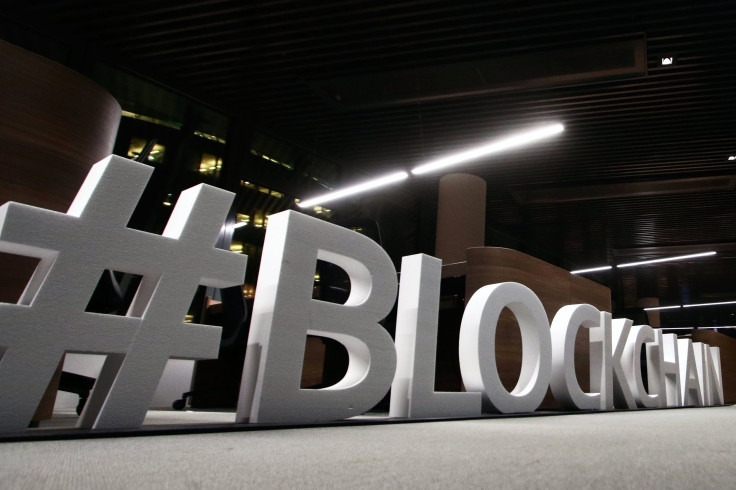Pushing Forward With Blockchain: Pressing Reset On Our Current Financial Infrastructure

Over the past few decades, society has taken steps to move our financial infrastructure towards a digital path, with the hopes of one day creating one cashless, international network that skips out on traditional banking and its limitations altogether. However, the steps we’ve taken haven’t gotten us far, and financial infrastructure as it stands is still long overdue for a complete reform . With the endless possibilities that decentralization and blockchain have to offer, it seems only fitting to examine exactly how the technology can be utilized to reinvent our modern financial infrastructure.
Blockchain essentially “blocks” off and safely stores data through cryptography. It can be used to create a secure and “trustless” transaction system that streamlines the financial market by eliminating unnecessary intermediaries. Currently, if you use your credit card or mobile payment app, numerous hidden fees would occur to secure profit margins for multiple intermediaries in the value chain. These financial “middlemen” come in various forms, each operating under different titles and taking a piece of the transactional pie. Credit card issuing banks and associations, payment processors, merchant account providers, and payment gateways all have a place in the process, collecting a percentage or flat fee from any single transaction while slowing down the payment process as a whole.
The recent surge of digital payments may be identified by some as fintech innovation. Unfortunately, the vast majority of fintech companies have built their popularity by simply wrapping a new UI layer on top of existing infrastructures. These services provide convenience and mobile accessibility, but with the exception of just two Chinese mobile payment giants, almost none were able to penetrate the financial infrastructure beneath it. Let’s take a closer look at Southeast Asia; much like the rest of the world, the digital payments industry in this region is extremely fragmented, with preferred payment methods varying significantly by country. Cash is still king, but along with the burgeoning e-commerce sector, many new digital wallets and electronic payment apps have recently flooded local markets by simply layering their services on top of existing financial infrastructure.
While this has resulted in incremental improvements to the user experience, no fundamental changes were made to the underlying payment stack. Given mobile payment players are just another added step in the value chain, one could argue it leads to even higher transaction fees and operational costs for merchants, as well as the same limitations in optionality when it comes to how e-commerce companies expand their businesses overseas.
To put it simply, we need a more universal and efficient financial system. Blockchain is important because, for the first time, movement of value can be achieved without centralized intermediaries. This opens the possibility of completely recreating the currently inefficient financial infrastructure from scratch. It’s unfortunate that technology has developed to the point where financial transactions can be completed seamlessly at almost no cost, yet industry incumbents have guarded their high margins by continuing to pass unnecessary fees onto the people.
Blockchain offers a unique opportunity to significantly evolve the core payment stack, and we need to start rebuilding a modern global financial system to address the many pain points of those trapped in the current value chain. Blockchain lowers transaction fees for businesses, which means reducing operational costs and freeing up capital that can be reinvested into driving growth. Moreover, such a universal payment system would enable e-commerce companies to unlock a much larger addressable user base than they had before, potentially transforming local businesses into global empires.
Developing nations open to exploring blockchain-based financial solutions have more to gain by rebuilding their payment and finance stack early on. In Mongolia, blockchain payments company Terra, where I'm currently leading business development as a co-founder, is designing a pilot program with the support of the government. The Mongolian Government has hoped to reform its largely cash-based infrastructure and offer its citizens an efficient, transparent, and convenient digital payment experience. Being open to reform can lead to nations leapfrogging others who have much more robust financial systems today. Once we launch our blockchain-based mobile payments system, payments will serve as an anchor to do much more for Mongolia, including affordable loans and efficient cross-border remittances.
Right now, blockchain is slowly making its way into our financial infrastructure in an effort to reinvent it for the better. The finance industry has an opportunity to utilize blockchain’s benefits by lowering transaction fees and providing global, comprehensive financial services. For most blockchain enthusiasts, incorporating the technology into our traditional system is an absolute must. We must present the world with real and effective use cases that prove blockchain isn’t just a buzzword, but a tool that guides us into the future of money. And, as soon as we begin to adopt it globally , we’ll see its benefits more clearly.
Daniel Shin is a well-known entrepreneur and investor in East Asia, and has founded or co-founded several companies.
© Copyright IBTimes 2024. All rights reserved.





















